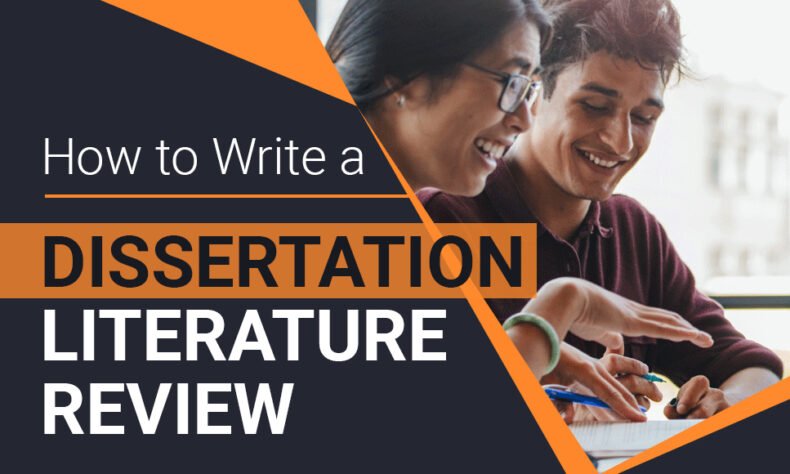
It is a big concern for academic writers to write a dissertation literature review, many thinks, shall it only be done by the dissertation services provider? No, you can write the literature review by reviewing the different books, articles, and other academic sources. A dissertation review is defined as scholarly studying the thesis, article, journal, books, and other academic writing sources on any specific topic. Writing a review aims to identify the gaps, check the theories and the applied methods. It provides a viewpoint on a research paper and combines both studies. A literature review gives a thorough outline of the field developments, and it also notifies a reader about the efficacy and consistency of the subject. The review makes the research paper more trustworthy for the readers. For the justification and satisfaction of the readers, it is important to give the time to get it right.
Some you have a question that how long a review can be? There is no limit. It depends on the area of study. But some reviews are typically between 50-70 pages because the review defines all the gaps and the arguments that will not make the review shorter. If you are writing a dissertation review and it is not covering many pages, so maybe you missed some research sources. Before writing a dissertation literature review, relax, sit down in a peaceful place, and search for relevant resources. This article will get the tips that help you write an impactful dissertation literature review without any problem.
Steps to Write a Dissertation Literature Review
Determine the research sources
Before writing a dissertation literature review, determine the research sources first and understand the relevant study that you would like to use in writing a review. Make sure your research sources are relevant and have been done through articles, books, journals, and other academic resources of reputed authors. When writing a review, do not use any irrelevant resources, always use authentic sources.
Evaluation of Research Sources
After determining research sources, now it’s time to evaluate the sources and read them carefully. It helps in focusing on the main sources. To get help in what sources you have to use, you must first overview all the information to understand the arguments and dissertation content. After the overviewing, take a more in-depth look at your research sources, make a note, be critical, and ask questions to yourself to identify the gaps. To ensure a consistent and relevant literature review, note down the methodological approach and theoretical argument.
Consider the Research Gaps
What is Gap? A Gap is defined as the answer to questions, or the academic material relevant to the research topic is missed from the existing research paper of any study field. It is the first step, and considering the research gaps is the important part of writing a dissertation literature review. Determining the research gap is essential for highlighting the research innovation, and it also shows that you know the importance of literature in the study field.
Start Reading the Finding Sources
After finding the gaps, start reading the sources. You will go through the various articles, books, journals, and academic material to identify the relevant one so, organize all your searches first—Mark all the related topics and citations. You can easily do quick research by using the relevant keywords, and it will give a frequent overview of the available related literature. Search the other articles by searching ‘related articles.’
To check the citation, the citation tools will help you to check the research paper citation. The tool will save time to figure the correct use of APA editing services or Harvard referencing.
Search Examples
If you are a beginner or you want to write an impactful review, review the dissertation review of your study field. For the impactful review, examples help a lot. They will give knowledge of academic writing, formal tone, referencing, and formatting style. By the dissertation examples, you can easily understand the importance of writing a review and the expectation in this respect.
Use Current Sources
Always use the current research sources to compose a review. At the time of reviewing the existing literature, it’s important to use the current sources because the advancements are happened in the fields over the years, especially in the science field as compared to other study fields. In the science field, the research study is evolving after some time and the source that’s only a few years old maybe even antiquated. In the other field of study, it may not apply. So, at the time of reviewing the existing literature, evaluate the research with current methods and confirm the ways in which the literature has changed. You have to use the sources according to the field of study; the social sciences and other subjects may not change after some time.
Review Formatting
The dissertation literature review consists of three sections; the introduction, text body, and conclusion. The first part of the review is the introduction, and it should be easy to read, understand, short but defined, and concentrated. The focus of the writing review should be described in the introduction. The main topics of review should be clearly stated. A professional written literature review states the arguments also. The literature review body should include a deep discussion of the academic sources that are used. The arguments must be presented clearly in the body of the review. At the last of the review, write the conclusion to summarize the dissertation review.
Conclusion
Write the conclusion of the dissertation literature review, incorporate the summary of the suggestions of the literature, and should connect to the argument and study question. The purpose of writing a conclusion is important to provide a summary of the review. Mention the future guidance of research in the conclusion section.
Use of Format
Ensure the proper referencing style in the dissertation literature review. Click here to get help in referencing style by our APA editing services and Harvard referencing guide.





